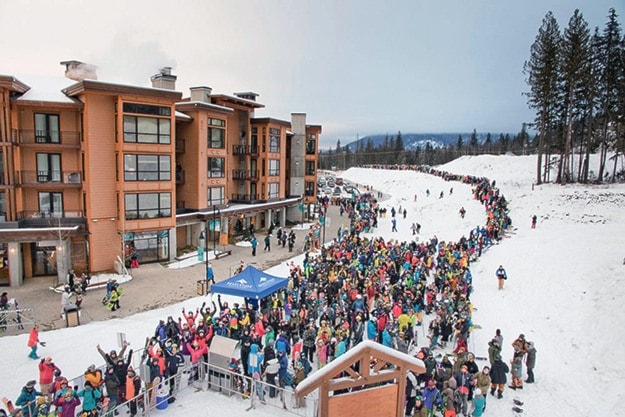When Alan Mason started as Revelstoke's director of economic development in 2001, the community was shrinking.
"In 2001, just after I got the job, the census data really took a tumble," he recalled. "The Province (newspaper) called us a sunset community. We were in the top four for population declines from the 1996 census."
Revelstoke's population had been in decline since the early 1980s when workers flocked to down to build the dam. It got worse in the 90s when CP Rail moved some jobs out of town.
The decline lasted until 2011, when the census reported the population was 7,139 people. At the time, the news came as a surprise — the population was expected to grow with the development of Revelstoke Mountain Resort in 2007.
"Because we heard the stories of people wanting to be here and wanting to come here, I've always been optimistic we were going to see an increase in the census data," said Mason. "I was surprised in 2006 and 2011 we saw a decrease."
Now, Mason, who's job is to spur economic growth in the community, can enter retirement happily knowing Revelstoke's population increased by 408 people between 2011 and 2016 according to the latest census data from Statistics Canada that was released Feb. 8.
"Fantastic," he said. "I think this is the first increase since I started here."
The numbers show Revelstoke's population was 7,547 people when the data was collected in April and May of last year. That's up 5.7 per cent compared to 2011.
The population for Area B Rural Revelstoke of the Columbia Shuswap Regional District increased by 8.3 per cent, to 598 people from 552.
Revelstoke's population peaked in the early 1980s when the Revelstoke Dam was built. In 1981, 9,081 people lived here. By 1986, 800 people had moved away and another 550 left by 1991. There was a small increase in population between 1991 and 1996 but then it continued to decline until 2011.
2016's population is slightly higher than the 7,500 people counted here in 2001.
"This helps to confirm what we are seeing. People are moving here, wanting to live here," said Mason, noting 41 people applied to replace him when he retires at the end of the month.
The census was taken after the ski season ended. One of the big questions will be how well it reflects the seasonal increase in population in winter. In 2013, a study conducted for the Integrated Community Sustainability Plan estimated there was about 13,000 people here, including tourists, on the busiest winter weekends.
"What the census doesn't give us is really looking at that non-permanent population — the impact of that," said Mike Thomas, the city's director of engineering and development services. "That ties into everything from the sewer treatment plant, water treatment plant, roads, vacation rentals, setting policies for these larger infrastructure and planning issues. That will play into how we approach things like DCCs."
Statistics Canada also released the data on dwelling counts, while more information will be released throughout the year.
The number of private dwellings in Revelstole is 3,531, of which 3,252 are occupied by permanent residents.
In the regional district, the data shows many homes are vacation properties — only 267 of 466 properties are lived in by permanent residents.
Thomas said the city will be trying to get a better idea on the non-permanent population while it conducts the sewer management plan this year. It will look at things like water consumption, sewage discharge and traffic data to try to get a handle on the number of people using the city's services at peak periods.
"We're really aiming to have a better idea of that as we move into the sewer treatment plant study, which will feed into the Development Cost Charge bylaw," he said.
Revelstoke's growth mimics that of British Columbia's as a whole. The province's population increased by 5.6 per cent over the last five years, reaching 4,648,055 people.
Canada's population grew by five per cent, topping 35 million people.
